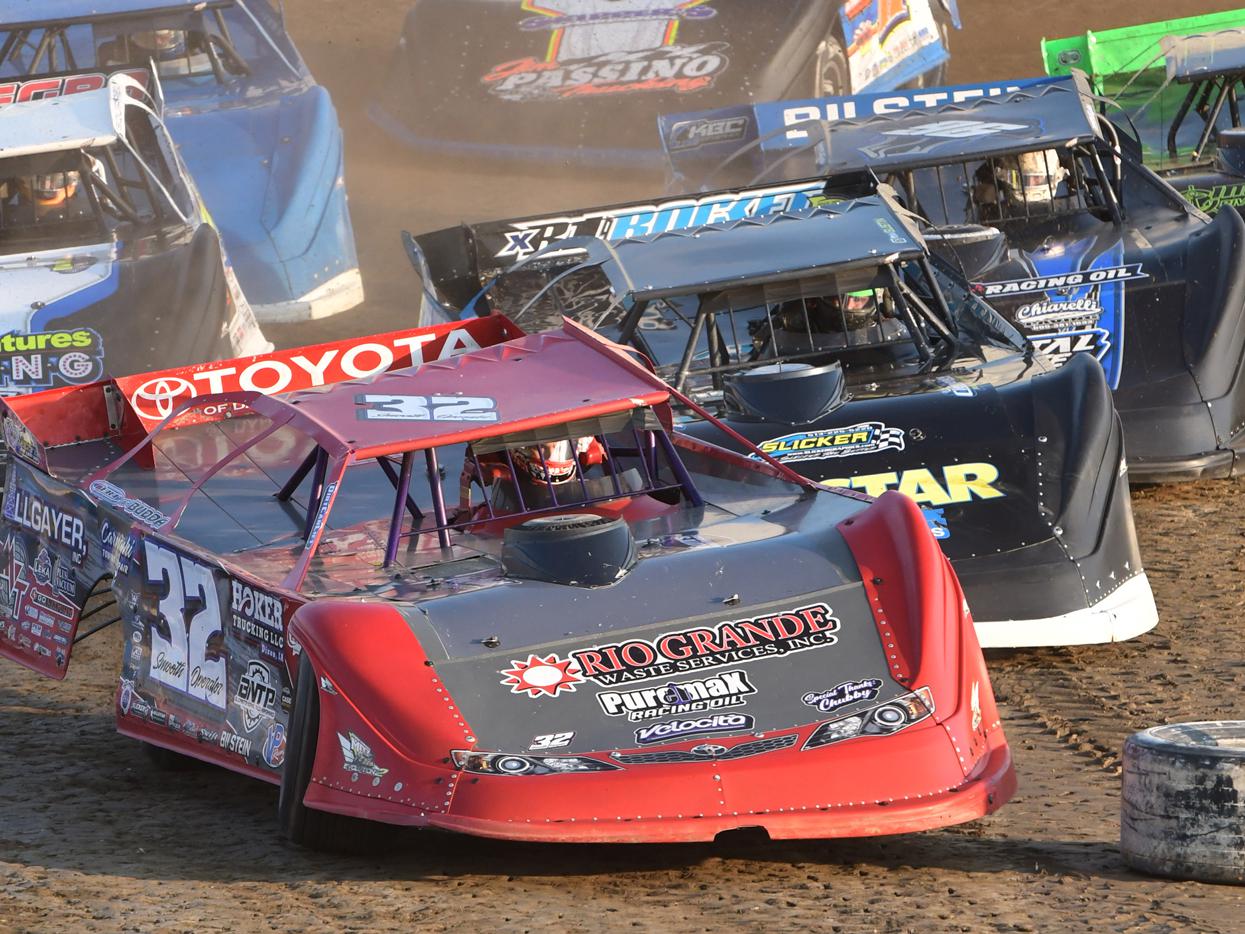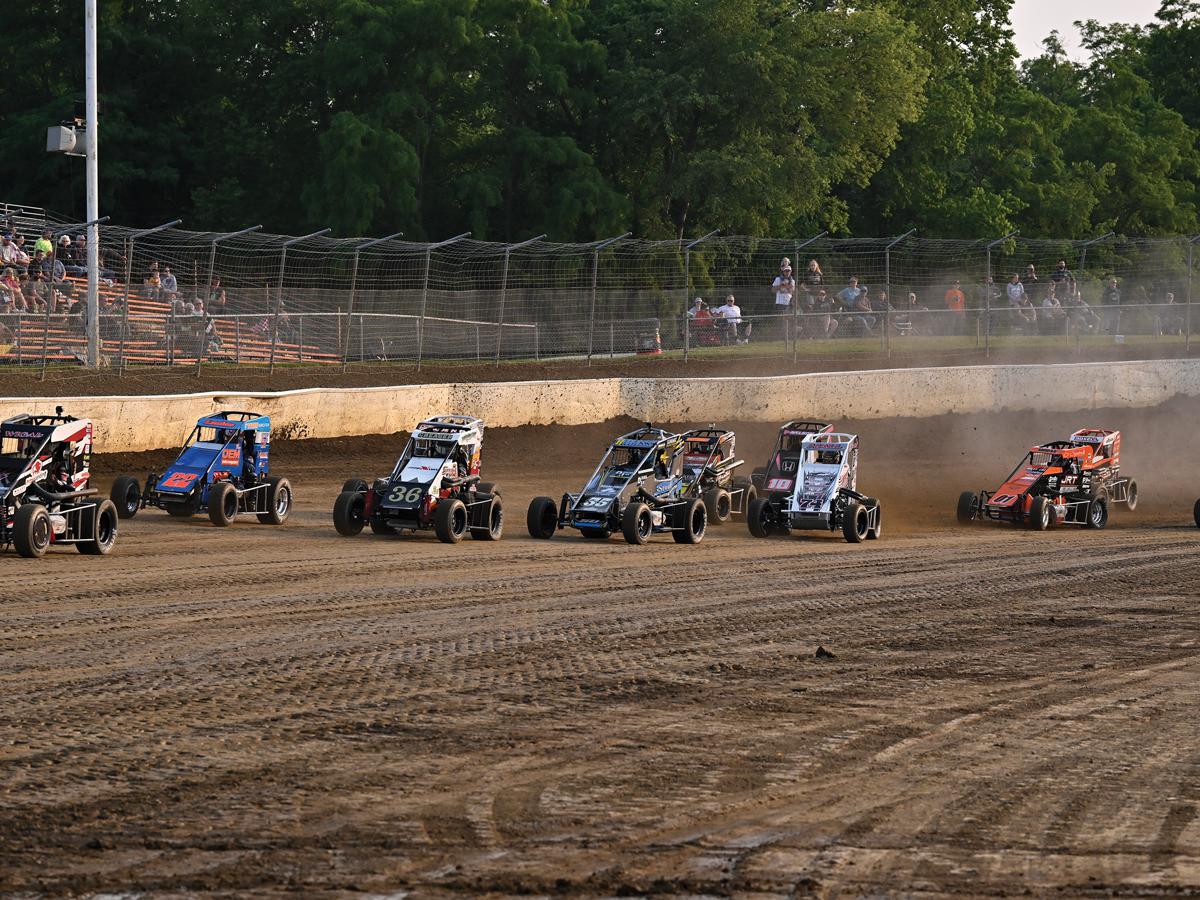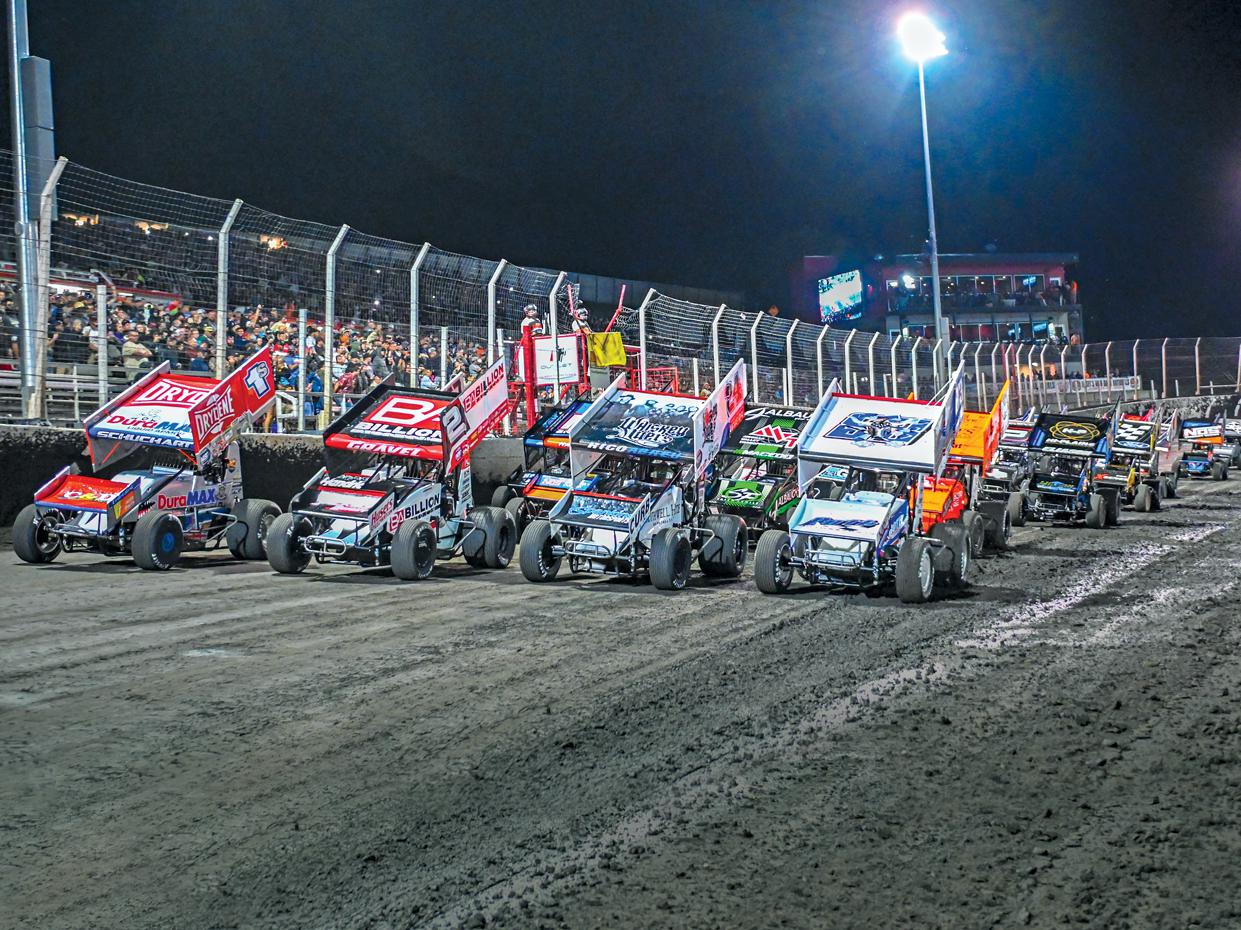Wound Up
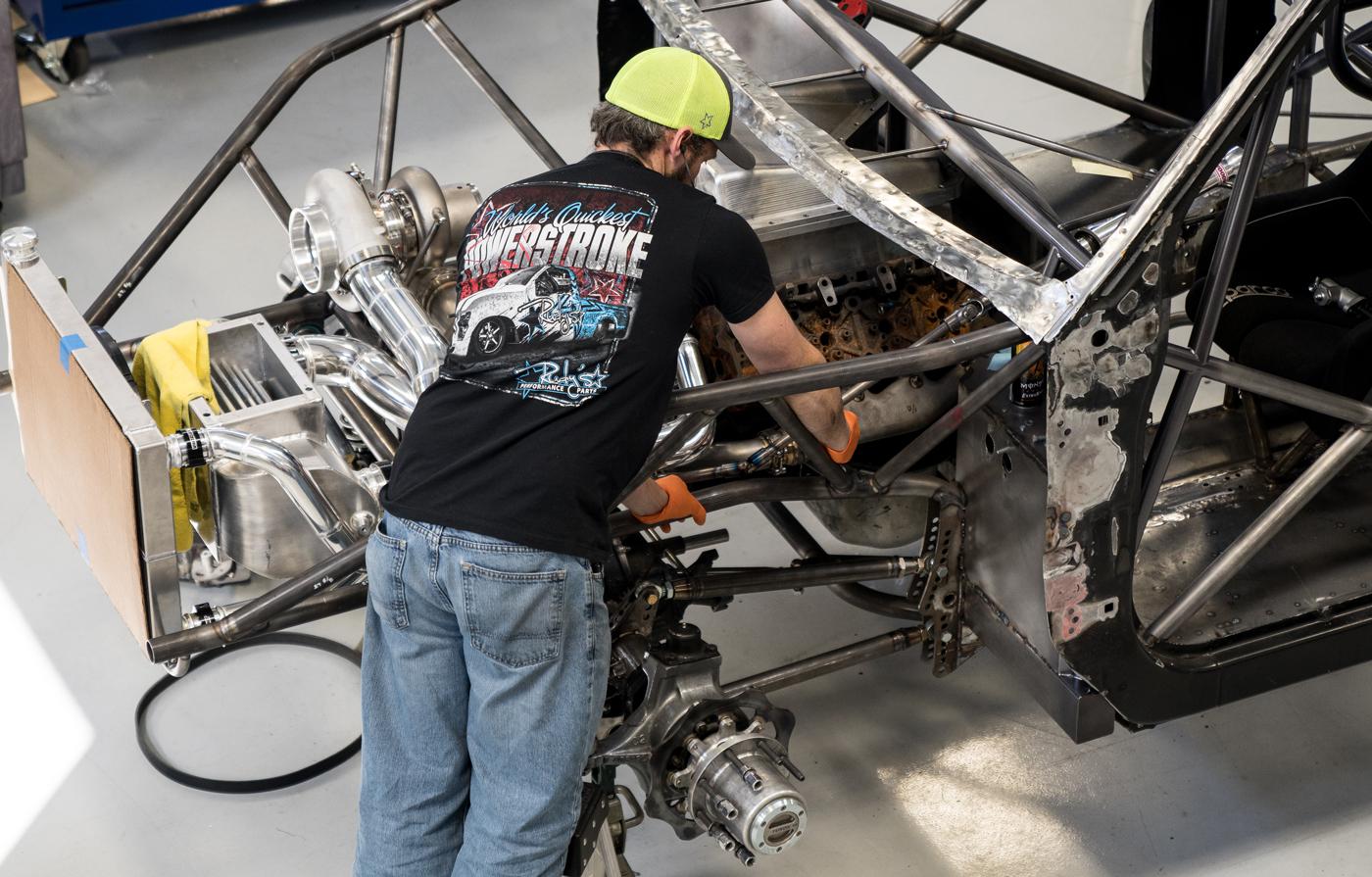
Photo courtesy of Rudy’s Performance Parts
The diesel racing market remains cautiously optimistic for growth as “getting back on track” and embracing new technologies stand out among stakeholders’ top priorities.
If there’s one segment in the performance and racing industry that may literally have a bullseye on its back, it’s the diesel market.
A wave of scrubbed events last year due to the COVID-19 pandemic reduced the need for parts and engine builds, especially on the tractor-pulling circuits that rely heavily on county fairs and other regional gatherings to support the competition. Helping keep the industry moving was the core audience for these events—millions of 3/4- and 1-ton diesel truck owners who use their vehicles in agriculture and construction while also modifying them for towing and recreation.
“I would say 75% of the events or more were canceled. So, it really slowed our work down,” said Ryan Salenbien of Salenbien Performance, Maybee, Michigan. “Nobody needed horsepower or had anything to fix.”
That stood in contrast to the experience of Wade McGinnis of Thoroughbred Diesel in Winchester, Kentucky, however, who told us, “Some sectors have been hit adversely with COVID, but for us business has been very good. We’ve been blessed. We’re more of an e-comm, so I feel like our niche customers are 650 horsepower or less. As far as the competition customer, obviously we can service them, but it’s really not our core customer.”
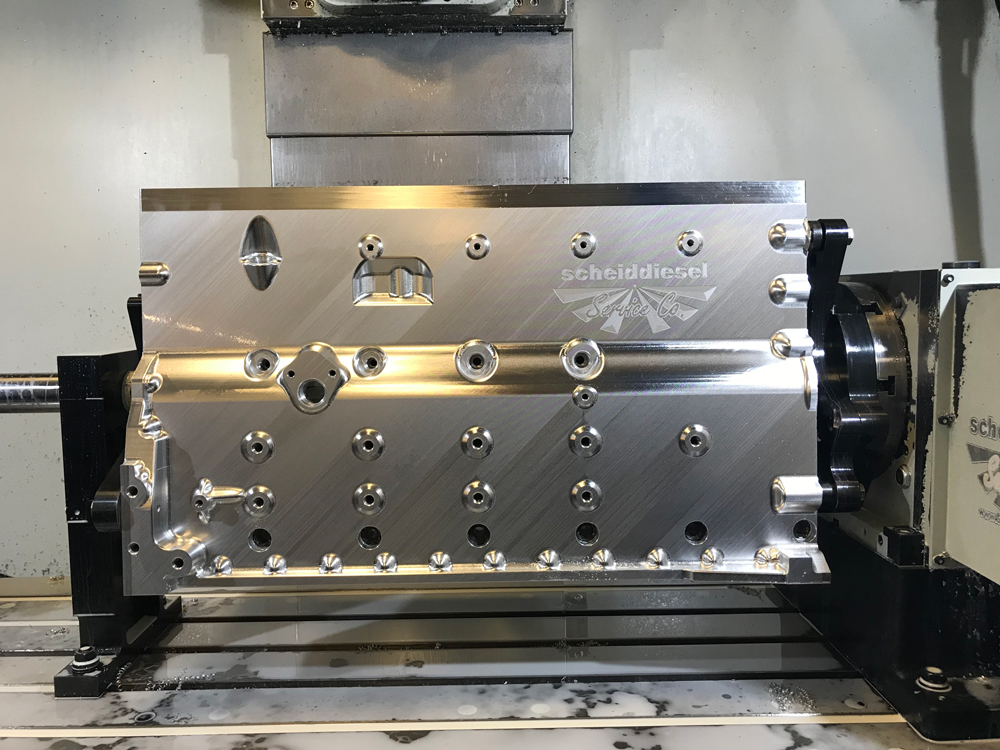
“We’ve been setting sales records every month,” agreed Lavon Miller of Firepunk Diesel, Plain City, Ohio. “The majority of our customer base is all essential workers. They got their travel and leisure taken away, so they put all their time into building their trucks.”
However, peeking around the garage doors of all these diesel shops is the US Environmental Protection Agency (EPA), which has mounted an unprecedented crackdown on the illegal removal or alteration of factory emissions components on production vehicles.
“We pretty much have dropped all tuning platforms with a diesel aftertreatment system. It’s just not something that Firepunk offers,” said Miller. “[EPA] pretty much made it clear that if the truck is plated for street use, there’s zero tolerance on tampering with the aftertreatment systems.”
Ten to 20 years ago, diesel vehicles were seemingly making headlines at nearly every global racing venue. Audi and Peugeot dominated Le Mans and WEC racing; then Audi quit to focus on electric car racing. Mazda toyed with a diesel in IMSA racing but returned to gasoline after three years. Now endurance racing officials have banned diesel for the hypercar prototype class.
Also, not too long ago there were high-profile diesel breakthroughs at Bonneville and in World Touring classes. A significant number of vehicles at Dakar were diesel-powered, too, and some still are. But across the globe, diesel racing opportunities have tapered off as automakers are pressed by government officials to eliminate the engines in passenger vehicles.
In the US, only drag racing and tractor pulling offer significant opportunities for racing a diesel engine. And the aftermarket has taken the sport seriously. Diesel technology includes clean-sheet billet engine designs and massive tri-turbo compound configurations that provide more than 150 pounds of boost. There has been an earnest uptick in engineering and parts development for the competitive puller or drag racer.
“Right now, the biggest excitement is getting back on the track and being able to have some events. It’s the number-one priority,” said Dan Scheid of Scheid Diesel, Lafayette, Indiana. “The farm economy right now—the grain prices and stuff—are extremely good. So, typically, when you got farmers that are making money, they like to pass it around.”
Scheid recently added a new mill and lathe to the shop, and fabricating high-pressure fuel lines is keeping the machines busy along with development of hardcore parts.
“We’ve been kind of stuck on the 12-valve heads for the Cummins 5.9 engines, and now we’re getting ready to introduce 24-valve heads,” added Scheid. “Either a mechanical or electronic fuel injection system can be used on them. So, we should be getting that out to the marketplace here just within the next month or so. And we still are marketing our 5.9 and 6.7 Cummins aluminum blocks that we have available for performance applications.”
Rudy’s Performance Parts in Burlington, North Carolina, is already drawing crowds and competitors, having sponsored its first 2021 event in late April at Piedmont Dragway in Julian, North Carolina. Approximately 300 participants raced, and despite weather delays the company leveraged the event successfully through its marketing channels.
“We pretty much start out just marketing on Facebook, posting videos and photos,” said Tim Eied. “We get a lot of attention from the spectators, from the vendors, from the racers, and we get a lot of hype from the ODSS (Outlaw Diesel Super Series). We had to cancel our last two events because of COVID, so we were limited to about 3,000 people this time.”
Rudy’s is shifting its attention away from performance upgrades to other needs of the truck enthusiast, including suspension, interior upgrades, and lighting.
“Also, we’ve veered off into the UTV side. We still have tuners from Edge, Superchips, and Banks that are emissions friendly,” noted Eied. “But AMP power steps, bed covers, parts like that is where our focus has shifted. It seems that everyone else in the industry is also making that shift.”
Diesel shops will gladly offer performance parts again if the manufacturer gets them certified through the California Air Resources Board (CARB).
“We’re working with some of the manufacturers and suppliers on CARB approvals for a lot of the parts,” added Eied. “PPE (Pacific Performance Engineering) has CARB-approved downpipes and up pipes. Edge is working on getting all their tuners CARB-approved. S&B is working on getting all of their intake systems approved. It’s awesome, and obviously they don’t want the market to be limited. So they’re working on them, they’re doing a great job of it.”
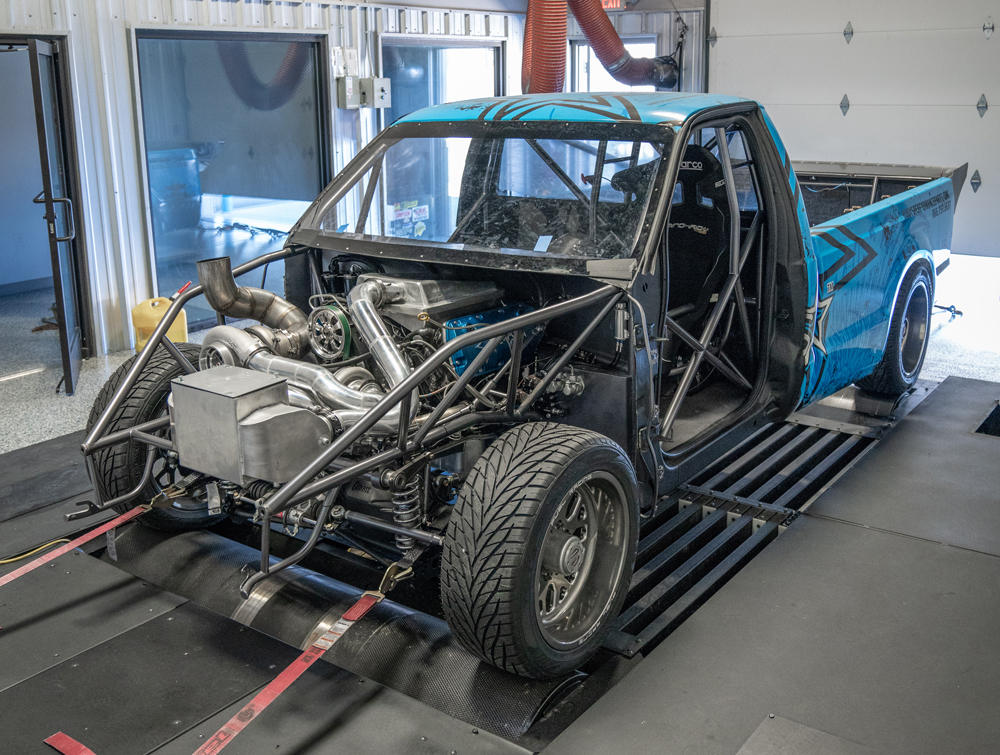
“[CARB approval] is in the forefront of every major manufacturer in the diesel niche right now,” confirmed McGinnis. “It’s what everybody is working toward. What does it need to help the movement? We need more testing facilities to get them tested and on the road.”
Miller is in regular contact with his state’s EPA office, and has set down strict sales policies that will keep it in line with federal guidelines as well.
“After communicating with my Ohio EPA rep, he said not all tuning is illegal. But if you have to turn off an oxygen sensor and you disabled the DEF pump or the EGR or anything like that, that’s considered tampering and you’ll be held accountable for it,” said Miller. “So, if I can’t sell a tune that doesn’t meet those requirements, I just don’t do it.”
As a result, many diesel shops are looking to offer an alternative to tuning.
“I think tuning is still popular, but I tell you one product that has really shined in the last couple of years has been throttle sensitivity boosters,” said McGinnis. “They’ve taken a place alongside tuning. It’s a nice performance modification that can be done to a truck. You can take it off if you have to take it in for warranty. Doesn’t really affect the warranty and really increases drivability.”
Since Salenbien caters to professional diesel racers with dyno testing and custom engine building—including tractor engines—he can focus more on parts development. At the 2019 PRI Trade Show, Salenbien introduced his Apex turbo, a unique design in which there is no fastener for the compressor and turbine wheel. The blades extend all the way to the core, which effectively increases the size of the turbo even though the housing dimensions don’t increase.
“That opens up the door in the limited classes. If you’re in a 3.0 class and allowed only a 3-inch compressor wheel, you got to maximize all you can out of that 3-inch hole,” said Salenbien, adding that other forms of racing are now interested in the patented design. “I didn’t know anything about car racing, but we’ve actually started pairing up with some racers and understanding that side of the world.”
Looking to the future, diesel shops are optimistic that sales will grow as the diesel racing schedule returns to normal, even if diesel fuel prices escalate or there’s still a hangover from the pandemic.
“The only real concerns that I have are supply issues,” noted Eied. “COVID made a huge impact on supply; but in all honesty, it doesn’t really appear to be getting much better, which is a little bit nerve-racking. The last thing we want to do is not be able to take care of our customers. So we’re doing everything we can to stay stocked up on inventory.”
“The main thing is more events,” added Scheid. “We feel like people are ready to get out and enjoy themselves.”
“I think as people stay performance-minded, it’s going to keep us evolving,” predicted McGinnis.
Keeping the market clean will also be a priority—even for racers.
“I try to preach over and over to my customers: You want to make it lean at wide open throttle. That way, you have a better chance of getting it dialed in to where you have as low smoke output as possible. Then people outside looking in to our industry don’t see us as just a polluting smoke machine,” said Miller. “Our S-10 race truck makes over 3,000 horsepower with no smoke going down the track. People are starting to jump on that trend of trying to put new setups together that are clean with less smoke output.”
SOURCES
–
Firepunk Diesel
firepunk.com
Rudy’s Performance Parts
rudysdiesel.com
Salenbien Performance
salenbienperformance.com
Scheid Diesel
scheiddiesel.com
Thoroughbred Diesel
thoroughbreddiesel.com
 MEMBERSHIP LOGIN
MEMBERSHIP LOGIN JOIN PRI
JOIN PRI
